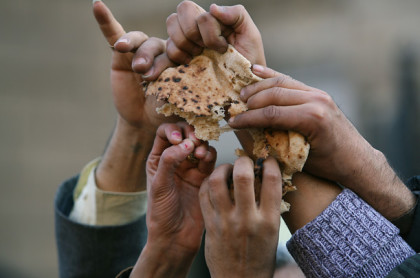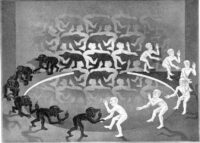 For most of the past 5,000 years, the period of human history when monetary systems arose and spread across the globe, wealth has been measured by the accumulation of assets. Land, precious metal, slaves, tulip bulbs or any combinations thereof – all of which at one time or another have served as currency – accumulated assets are created and acquired at the expense of someone or something else, and most often at the expense of the poor.
For most of the past 5,000 years, the period of human history when monetary systems arose and spread across the globe, wealth has been measured by the accumulation of assets. Land, precious metal, slaves, tulip bulbs or any combinations thereof – all of which at one time or another have served as currency – accumulated assets are created and acquired at the expense of someone or something else, and most often at the expense of the poor.
Chinese Mandarins, British Aristocrats, Spanish Conquistadors, Islamic Caliphs, American Capitalists; within any large society where a dominant power resides, the creation and accumulation of assets has driven governing policy, social structure, military adventure, and ultimately the collapse of that society. Collapse happens when the accumulation of wealth by the few becomes so extreme that the many, buried in interest-bearing debt and in perpetual poverty, revolt, cancel debts and strip the wealthy of their assets.
As author David Graeber notes in “Debt – The First 5,000 Years”, monetary matters easily become conflated with matters of morality and reflected within the language of religion, personal relationships and social narratives, all of which incorporate metaphors of debt. Whether a debt to MasterCard, God, our ancestors or society, we reckon relationships in monetary terms.
During periods when material assets such as gold and silver were measures of wealth, vast expeditions and enterprises were mounted to acquire them. The conquest and looting of South America by Spain, with its concomitant enslavement and extermination of millions of indigenous people, was driven by royalty’s desire for precious metal. This cycle of military conquest using paid soldiers to acquire assets to produce more money to pay more soldiers to expand military conquest is an historically repeated pattern. Societies that become trapped in such cycles of wealth accumulation inevitably experience monetary collapse when their sources of material wealth are exhausted.
During periods when non-material assets – stocks, bonds, IOUs, credit lines and the like – what we today call “credit instruments” become measures of wealth, they often disrupt the material asset basis of an economy. We see this at work today in the financial sector, where betting on the future value of money has supplanted using money to buy and sell goods and services. A major portion of our economy is devoted to making money off money, and in order to do that new forms of “assets” have been invented, non-material assets that are ideas only, such as derivative credit default swaps, hedge funds and other exotic forms of monetary speculation.
When government is unable or unwilling to regulate imaginary, non-material asset categories economic risk increases. When wealth invested in these conceptual credit instruments becomes enormous, as it did in 2008 and is today, and if the value of these instruments drops it can take the entire economy with it. This is why we hear the name Goldman Sachs and invocations of Wall Street so regularly; through creative manipulation of non-material wealth – credit instruments – the financial sector has become more consequential than government.
Left behind in all this are the poor and our shrinking middle class, those toiling hard each day to earn money to buy physical things like food, clothing and shelter. Mired in debt, they know they are getting the short end of the stick and they are angry. At such times in world history, violent revolution has been the result. Today? All bets are off.





Be First to Comment